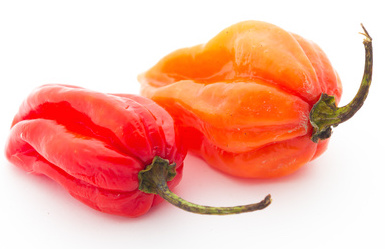
Health Benefits:
Aids in weight loss
Anti fungal
Combats fatigue
Helps prevent night blindness
May regulate heart rate
Prevents sinusitis
Relieves chest infections
Relieves constipation
Nutrition:
Serving size: 1 pepper; Calories: 4; Fat: 0g; Cholesterol: 0mg; Sodium: 0mg; Carbs: 1g; Fiber: .4g; Sugars: 0g; Protein: 0g; Potassium: 0%DV Vitamin A: 2%DV; Vitamin C: 10%DV; Calcium: 0%DV; Iron: 1%DV
Did You Know?
- Habanero peppers get their fiery kick from capsaicin, a compound that causes a burning sensation by activating pain receptors in the throat, nose and mouth.
- The habanero can be up to 40 times spicier than a jalapeño! 100,000 to 350,000 on the Scoville scale.
Ways to Eat:
- In a sauce or salsa
- Dried
Farming Trivia:
- There are more than 500 varieties of chile and sweet pepper plants
- Although peppers are often considered to be vegetables, they are actually fruits
- For cooling your mouth after eating a pepper the best thing to drink is milk or some kind of dairy product.
Note: Always consult a physician for any specific health questions and concerns. Some of this information may be subject to change should there be any new findings from Federal Health Administration (FHA), Food & Drug Administration (FDA), American Medical Association (AMA), American Cancer Society (ACS), and / or other leading food, nutrition and medical advisors.

